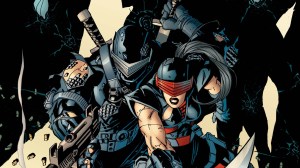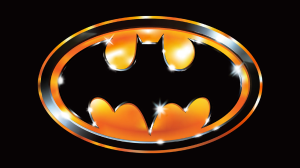The ’90s is Marvel‘s most confusing decade. On the one hand, the publisher put out books like X-Men (Vol. 2) #1, X-Force #1, and Spider-Man #1, massive sellers that changed the course of comic history and cemented the dominance of the greatest artists in comics. On the other hand, the company went bankrupt. The ’90s started with great artists being the focus and ended with great writers being the focus. The highs and lows of Marvel in the ’90s are dizzying. Nowadays, the ’90s are looked upon with nostalgia, but very few people are arguing that it was as good decade for Marvel. The company made a lot of mistakes, and going back to read some of those books can be a chore. However, there were some amazing books, even during the darkest days of mid ’90s Marvel, and the best written book is an extremely surprising one — Wolverine, which was under the pen of Larry Hama.
Videos by ComicBook.com
Wolverine has always been popular, but in the ’90s, Hama’s Wolverine was a top ten selling book and his writing was a huge reason. Hama is one of those writers who you probably haven’t heard of, but he had a much bigger impact on pop culture than you can imagine. Hama is a brilliant writer, and his tenure made Wolverine into the ultimate Marvel hero. However, Hama didn’t just give readers the best ’90s Wolverine stories. He helped create one of the most beloved pop cultural institutions of the ’80s — G.I. Joe.
Larry Hama’s Work on Wolverine and G.I. Joe Changed Pop Culture Forever

Larry Hama is something of a polymath. He’s a writer, an artist, and a musician. He fought in the Vietnam War and studied multiple martial arts. Hama sold his first comic work at 16 to Castle of Frankenstein, a horror magazine, and joined the US Army, fighting in Vietnam from 1969 to 1971. He moved to New York after his discharge, and joined legendary artist Wally Wood’s studio, assisting Wood on Sally Forth and Cannon, while also working in the underground comix scene of the day. He joined Neal Adams’s Continuity Studio, and had his first known work of his own on DC’s Weird World #2. He replaced Gil Kane on the Iron Fist stories in Marvel Premiere, and then worked as an editor at DC in the late’70s. In 1980, he became an editor at Marvel, and eventually pitched a new series for Nick Fury that was called Fury Force. When Hasbro licensed G.I. Joe to Marvel, Hama was given the job by Jim Shooter, modifying Fury Force, and creating the characters that would define a generation of boy’s toys. If you have a favorite G.I. Joe character, there’s a good chance that Hama created them. He even wrote the file cards on the back of each figure. Hama used his experience in Vietnam to create a more realistic type of military comic, while still following the rules of the Comics Code Authority. Eventually, he would create The ‘Nam, a war book about Vietnam that I implore you to find.
Hama wrote nearly every Marvel issue of G.I. Joe, his stories sometimes getting adapted for the cartoon. The greatest strength of Hama’s writing, beyond the fantastic action that used his background as an artist, soldier, and martial artist, was the poetic way he wrote everything. When you got a Hama character, you were getting something special from a man who understood the dangers of war and the joys of life. Hama’s Wolverine used this approach to perfection, redefining Wolverine as the poet ronin that we know and love today. Hama’s sheer creativity has rarely been matched, and I would honestly say that Hama was the best Marvel writer of the ’90s. He was as at home writing realistic war stories like The ‘Nam as he was the most fantastic ones in G.I. Joe, and his Wolverine was spectacular, going in crazy directions at times, and truly making Wolverine into a special character. Hama knew how to work with artists, and understood page real estate. His books had just the right amount of exposition, getting you into the character’s head, and his prose was fantastic. He let his artists work, bringing the stories to life brilliantly. Chris Claremont created the voice of Wolverine, but Hama perfected it, and was able to push the character in new directions. He was immortalized by Hasbro, as the 1987 figure Tunnel Rat’s sculpt was based on him (Hama was an explosive ordnance specialist, just like Tunnel Rat). Hama gave a whole generation of boys their greatest heroes, and did it with a style and skill that no one at Marvel was matching.
Larry Hama Is a Treasure

There’s really nothing out there like a Larry Hama comic. His G.I. Joe work should be enshrined, and if you’re enjoying the current run of G.I. Joe in the Energon universe comics, you have Hama to thank — every G.I. Joe writer after him has been influenced by his work. If you love Wolverine, Hama is the man who took him through his most popular years; your favorite Wolverine writer was influenced by his work (although once you read his work, he’ll be your favorite). Hama is nearly 80, but he’s still going to cons, and meeting his fans. Hama is a true renaissance man, and I recommend basically anything by the man. His G.I. Joe: A Real American Hero is being released in omnibus editions by Image Comics. The ‘Nam is unfortunately out of print, but there are issues out there to find. He wrote Wolverine (Vol. 2) #31-43, #45-57, #60-109, and #111-118, as well as the -1 issue and Wolverine Annual 1995, and you can find omnibuses of his work; you should.
Larry Hama worked at Marvel during some of its best years and its worst years, his work never anything short of spectacular. He was so much more important to pop culture than any of us knew, his boundless imagination influenced by a life unlike any other. Larry Hama is a treasure and he deserves to be talked about as not just the best Wolverine writer, not just the man who created the best of G.I. Joe, but one of the greatest creators to ever work in comics.
What do you think about Larry Hama’s work? Sound off in the comments below.









